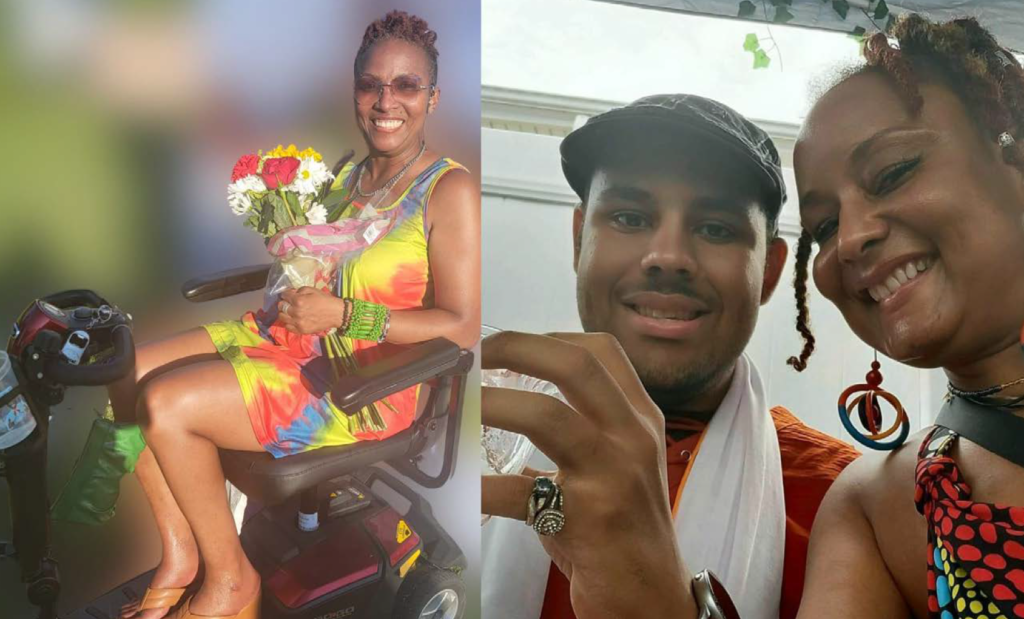Our invisible disabilities

STACEY SAMUEL-O’BRIEN
Disabilities come in various forms, and just because you cannot see a person’s disability doesn’t mean it doesn’t exist.
Mine is obvious, but that is not always the case. Sometimes people need to explain their situation before others can understand, and unfortunately, there are times when the explanation is still not enough for others to fully recognize a disabled person’s limitations.
I’ve said before that disabled people want to be treated equally, but there are times when we need different provisions, or we simply need extra caution, patience, or compassion to function comfortably.
While these may come more readily in the case of physical disability, they may be necessary in all situations, regardless of the disability. Let me give you two stories.
I was at a Carnival fete (on my scooter) last year and needed to use the restroom. The facilities were essentially multiple raised trailers of four toilet stalls each (male or female), with six steps leading into each. The trailers were controlled and managed by an attendant. I approached a trailer, accompanied by my friend Johnny, who lifts me up and down steps if needed.
The attendant, after hearing that I would need to be lifted up the steps, asked us to wait until all the stalls were cleared and then allowed Johnny to take me into the female trailer. She then “closed” the trailer to everyone else until I was done and Johnny came to take me back down the steps. I was grateful that she chose to go above and beyond to accommodate me.
In another scenario, my friend Denyse was at a mall with her six-foot-three-inch 18-year-old son, Xavi. He has no mobility or physical issues, so anyone who sees them out together would assume that he is a typical teenager, but that couldn’t be further from the truth. Xavi is autistic and non-verbal. His autism makes him vulnerable in many situations, because he is very trusting, so Denyse needs to protect him. It is demanding, but they have their routines and have found ways to live a normal life given their circumstances.
On that day in the mall, Xavi needed to use the restroom and Denyse needed to accompany him. At the time, in 2014, there were no family restrooms, and the security guard in the mall would not allow them to go into either the male or female restroom together. The more Denyse explained their situation, the more the guard doubled down, and the more agitated Xavi became, which didn’t help their situation or increase the guard’s empathy. They left…lest it end disastrously.
Like the fete, the mall’s facilities were ill-equipped for disabled people, but unlike the attendant, the guard was unable to appreciate Xavi’s disabilities. In their situation, neither Denyse nor Xavi felt comfortable, and unfortunately, their outing was cut short because the best decision was for them to leave.
Both the attendant and the guard relied on physical “proof” of disability, a common issue in our society; but there are a host of invisible disabilities, for example, debilitating pain or fatigue, hearing and sight impairments, that are not obvious. It is, at best, unfair that disabled people must explain the private and possibly embarrassing effects of their conditions just to be allowed basic services. Not to mention the actual physical pain and/or trauma that can result if they are denied.
In both situations, the root problem lies in the facilities, or lack thereof, available to the disabled community in TT. I understand that our infrastructure does not always lend itself to expansion or renovation to update buildings, but, at a minimum, public establishments should have basic facilities for the disabled. Simply having a ramp – permanent or makeshift to be used when needed – for patrons with mobility issues can significantly improve a disabled person’s experience. A bigger, unisex family restroom that affords additional privacy and accessibility is another simple way to accommodate the disabled population. Frankly, a family restroom is not even a “disabled person” specific convenience; many other people (parents and their children and/or babies) could benefit from a family restroom.
In the absence of physical accommodation, training, empowering and supporting staff to make considerate and reasonable accommodations on a case-by-case basis can go a long way. People don’t need to know exactly how to help every disabled person – they just need to ask questions. Make no assumptions; the key to helping people with special needs is by asking if they need help and then listening when they explain their needs.
I say all the time that my disability is “in your face”; it is quite obvious that there is something wrong with me. For others like Denyse and Xavi, it is not as obvious, but they need others to be just as empathetic, compassionate and accommodating.
Multiple sclerosis (MS) is a debilitating autoimmune disease that affects the central nervous system. In MS, the body’s white blood cells attack the protective covering of nerve fibres. When nerve fibres become exposed, electrical messages between different parts of the body and the brain are no longer transmitted effectively. MS can lead to sensory, cognitive, digestive and muscular issues. It is a degenerative disease for which there is no cure.


Comments
"Our invisible disabilities"